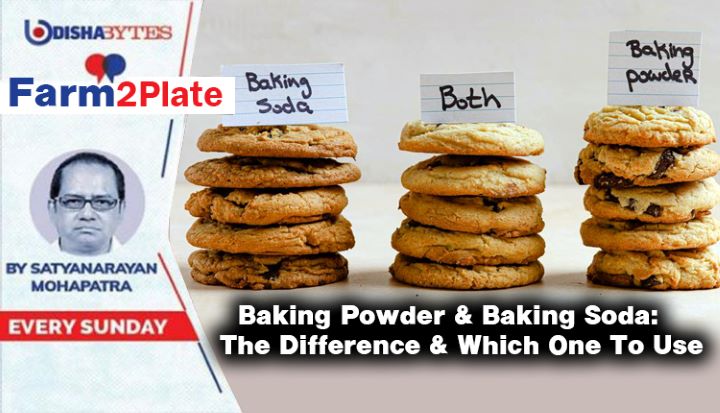Baking Powder & Baking Soda: The Difference & Which One To Use

Baking soda and baking powder – these two ingredients have confused almost everyone who indulges in baking.

They are leavening agents commonly used in baking that cause dough to expand by releasing gas once mixed with liquid, acid or heat. Rising agents give baked goods optimal volume, texture and crumb, and can include baking soda or baking powder, whipped egg whites or cream, active or instant dry yeast, and even steam.
Let’s have a look at the difference between baking soda and baking powder and the purpose for using it in baking. Are these two ingredients interchangeable?
Baking Soda and Baking Powder: They are not interchangeable. They both are leavening agents and the basic purpose is to make your baked item rise. Though they are also termed as rising agents, they are chemically different.
Baking Powder and its role in baking: Baking powder has three ingredients in it, namely baking soda, cream of tartar and corn flour/rice flour that absorbs moisture. Three types of baking powder ar available in the market – fast acting, double acting or slow acting. The difference is in the amount of acidic agent present in them.
Baking powder activates when it combines with a liquid ingredient. Hence one should bake the cake just after mixing wet and dry ingredients. When baking powder comes in contact with a liquid ingredient, it produces carbon dioxide. This helps the mixture to expand and rise. Follow the recipe and use the recommended measurements of baking powder. Excess baking powder can make the cake bitter. If you use less than recommended amount, it will result in a dense cake. Thumb rule — a recipe with 1 cup of flour calls for 1 tsp of baking powder.
Baking Soda and its role in baking: Baking Soda is a salt composed of sodium and bicarbonate ions. It is little salty in taste. One needs an acidic medium like yogurt, vinegar and buttermilk to activate baking soda. It’s a common ingredient in baking cake, as it works as a leavening agent.
Baking soda plays an important role in eggless baking. When mixed with other ingredients, it releases carbon dioxide, which expands the mixture. As a result, one gets a light and fluffy cake. It has strong flavour, so one should be careful while using it. Excess of it can result in a soapy cake. Baking soda causes reddening of certain ingredients – cocoa turns red when baked, hence the name Devil’s Food Cake. Thumb rule in a recipe of 1 cup of flour calls for ¼ tsp of baking soda.
Difference between baking powder and baking soda: Baking soda and baking powder are both white, odourless and nearly indistinguishable. Both help your baked goods to rise and expand. Without the ingredients, all your cakes would be very flat and dense. Baking soda is 4 times more powerful than baking powder. One teaspoon of baking powder contains ¼ teaspoon of baking soda. Baking soda works when combined with acidic food. The purpose of baking powder and baking soda is to react with the ingredients and release carbon dioxide gas. The gas adds up to the bubbles formed while whisking the ingredients, make them large and lift the bake products.
Deciding when to use baking powder and baking soda: If the recipe has an acidic ingredient like yogurt, then choose baking soda. Baking soda is an alkaline powder. It gets activated when combined with acidic ingredient. However, if the recipe has no acid, then the option is baking powder as it has built-in acid. But some recipes call for both as baking soda does not produce enough carbon dioxide. In such cases, the recipe calls for baking powder as well. Baking powder gives that extra rise to your recipe.
Flavour and browning of the recipe is another reason to use baking soda and baking powder together. For example, if in a recipe there is orange juice for its tangy flavour, baking soda can make it completely flat. Thus adding baking powder will bring in its own acid and the tangy flavour of orange juice will sustain. On the other side the browning happens best in an alkaline environment. Remember, baking soda is an alkaline powder. If a recipe needs the cake to be brown to look better, baking powder makes it rise but not brown.
Once you understand the role of a chemical in the baking, you are better off next time.
Why wait, keep on baking.

Comments are closed.